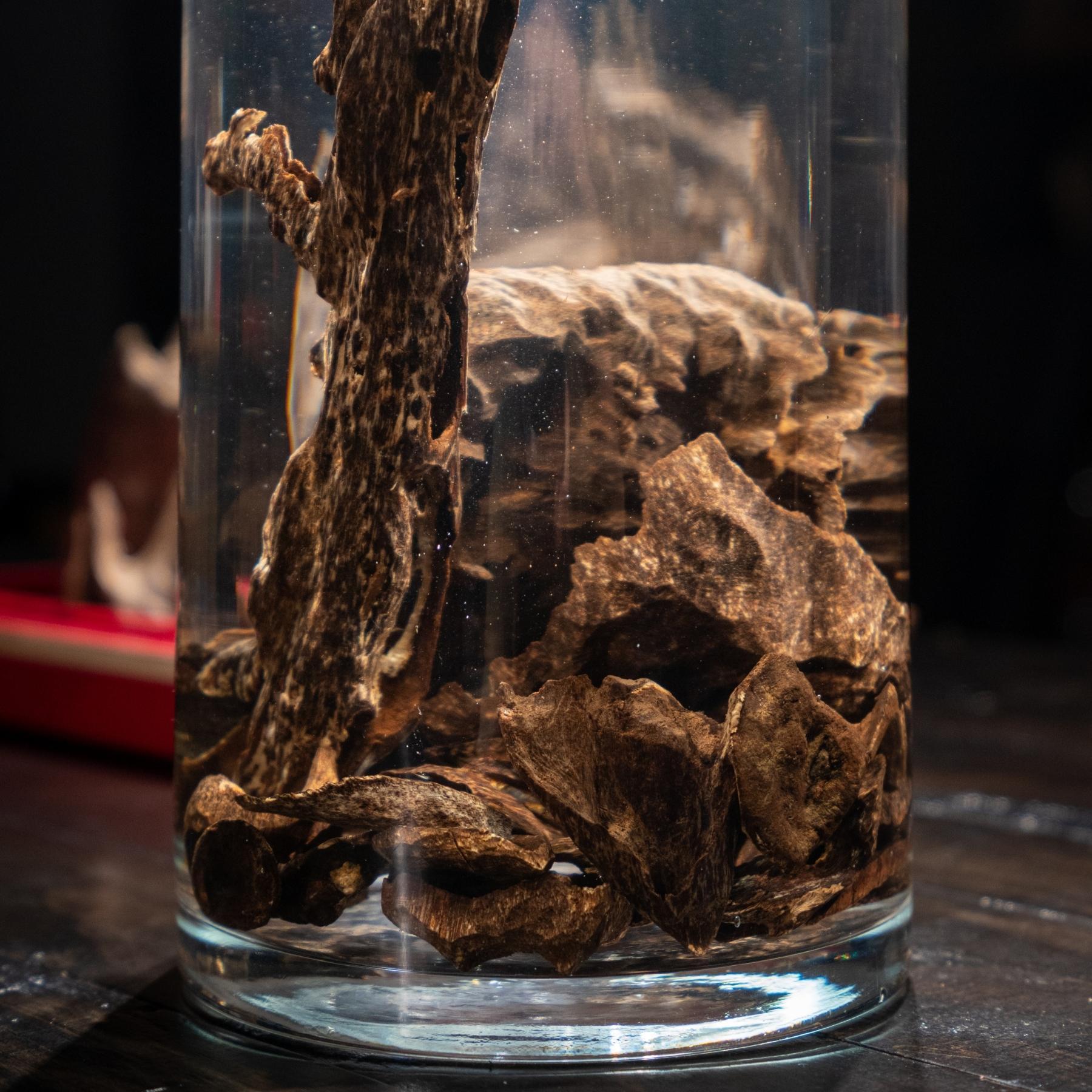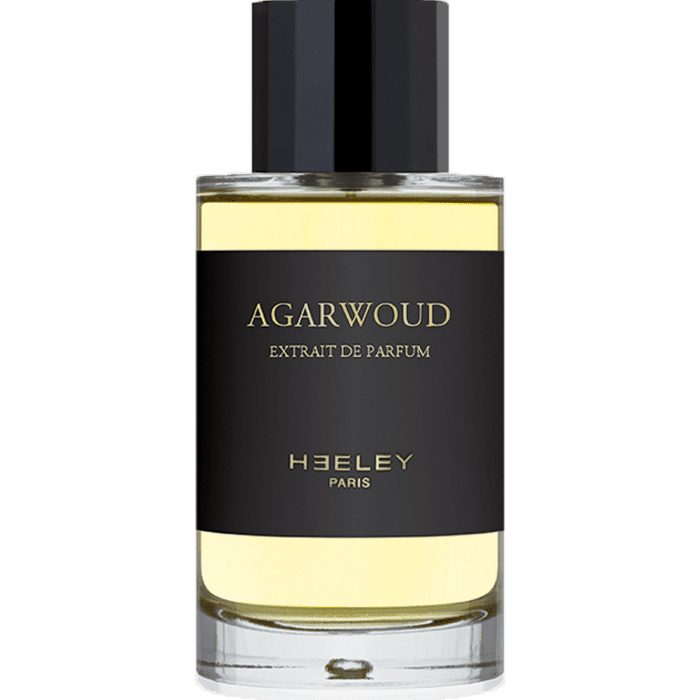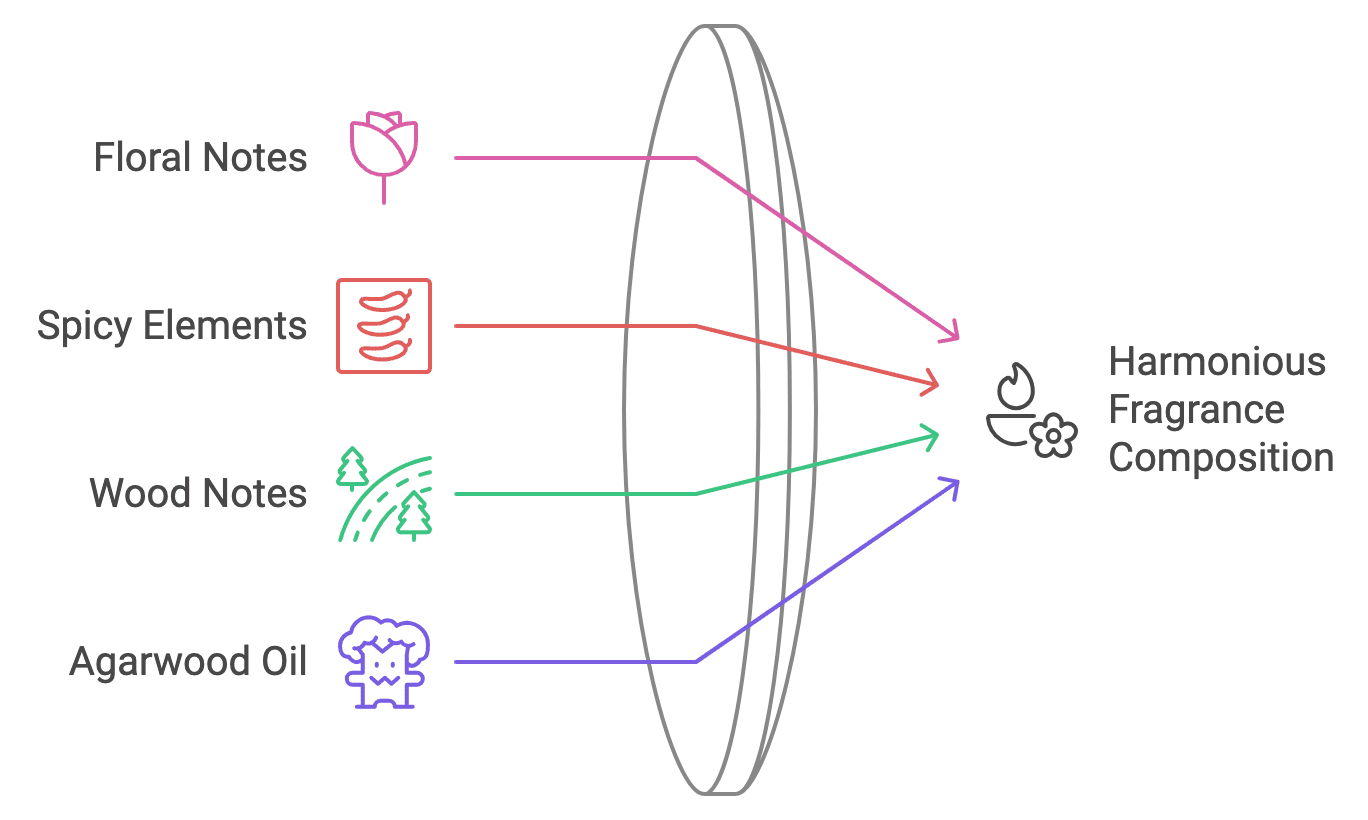
Introduction
Table of Contents
ToggleAgarwood perfume has long been celebrated for its rich, exotic aroma and is considered a treasure in the world of fragrances. This unique scent, derived from the rare and precious agarwood tree, holds a special place in the fragrance industry. The allure of agarwood in perfumery lies in its deep, woody notes that evoke a sense of mystery and luxury.
Notable fragrances like Dunhill Agarwood and traditional Japanese agarwood perfume have captivated perfume enthusiasts worldwide, showcasing the timeless appeal of this aromatic ingredient. Exploring agarwood perfume further enriches the Agarwood Products Overview discussed in this article.
What is Agarwood?
Understanding Agarwood (Oud)
Agarwood, also known as oud, is formed when the Aquilaria tree becomes infected with a particular type of mold. In response to this infection, the tree produces a dark, fragrant resin, resulting in the highly prized agarwood fragrance oil. The formation of agarwood is a rare event, making it one of the most expensive and sought-after ingredients in the fragrance industry.

Historically, agarwood has been used in religious ceremonies, traditional medicine, and as a symbol of wealth and status. Understanding the definition of agarwood is essential to appreciate its role in perfumery.
Agarwood Fragrance Profile
The scent of agarwood fragrance oil is complex and multifaceted. It combines deep woody notes with sweet, balsamic undertones and subtle hints of spice and leather. This unique aroma makes it a coveted component for creating perfume with agarwood, as it adds depth, warmth, and longevity to fragrance compositions. Its ability to blend harmoniously with other notes enhances the overall olfactory experience, making agarwood an indispensable element in high-end perfumery.

Agarwood in Perfumery
The Role of Agarwood in Perfumes
Agarwood in perfumery serves as a base note that anchors the fragrance and extends its wear time. Its rich and potent scent profile allows perfumers to craft complex and layered fragrances that evolve over time. Agarwood pairs well with floral, spicy, and oriental notes, providing a foundation that enhances and balances the overall composition.

The use of agarwood fragrance oil elevates a perfume’s sophistication, appealing to consumers who appreciate luxurious and exotic scents. Complementing the rich scents of perfumes, agarwood incense enhances the aromatic ambiance.
The Rise in the Fragrance Industry
The popularity of agarwood has surged in the fragrance industry over the past few decades. This rise can be attributed to a growing consumer interest in niche and artisanal fragrances that offer unique sensory experiences. Market trends indicate a shift towards more natural and rare ingredients, with perfume with agarwood leading this movement.
The scarcity and exclusivity of agarwood have made it a symbol of luxury, further fueling its demand among discerning customers. When buying quality agarwood for perfume, understanding its attributes is crucial.

Notable Agarwood Perfumes
Dunhill Agarwood
Dunhill Agarwood is a prime example of a modern fragrance that showcases the beauty of agarwood. This perfume blends the richness of agarwood with notes of pink pepper, ginger, and suede, creating a sophisticated scent that exudes elegance and masculinity.
The composition highlights the versatility of agarwood fragrance oil, seamlessly integrating it into a contemporary fragrance that appeals to a wide audience. Dunhill Agarwood has received positive reviews for its longevity and the harmonious balance of its notes.

Japanese Agarwood Perfume
Japanese agarwood perfume holds a special place in perfumery due to Japan’s historical association with agarwood, known locally as “kyara.” Traditional Japanese perfumery emphasizes subtlety and refinement, focusing on the pure essence of natural ingredients.
Japanese agarwood perfume often features a delicate blend of agarwood with hints of floral and herbal notes, resulting in a serene and meditative fragrance. The meticulous craftsmanship and cultural significance make these perfumes unique compared to other agarwood fragrances on the market.

Creating Perfumes with Agarwood
Sourcing Agarwood Fragrance Oil
The extraction of agarwood fragrance oil is a meticulous and time-consuming process. It involves harvesting the resin-saturated heartwood and distilling it to produce the essential oil. Quality is paramount when creating perfume with agarwood, as the scent profile can vary significantly based on the tree’s age, the region of growth, and the extraction method.

Perfumers seek high-quality agarwood oil to ensure the authenticity and richness of their fragrances. The foundation of many agarwood perfumes lies in the meticulous oud essential oil production.
Blending Techniques
Perfumers incorporate agarwood into fragrances by carefully balancing it with complementary notes. Given its potent aroma, even a small amount of agarwood fragrance oil can significantly influence the scent. Blending techniques involve pairing agarwood with floral notes like rose or jasmine, spicy elements such as cardamom or saffron, and other woods like sandalwood or cedar.
The goal is to create a harmonious composition where agarwood in perfumery adds depth without overpowering the other ingredients.

Challenges in Perfumery
Using agarwood presents several challenges in perfumery. Ethical sourcing and sustainability are major concerns due to the over-harvesting of wild agarwood trees, leading to their endangered status. The high cost and rarity of authentic agarwood also pose difficulties for perfumers and consumers alike.
These challenges have prompted the industry to explore sustainable practices and alternative methods, such as cultivating agarwood plantations and developing synthetic substitutes that mimic the scent of natural agarwood.
The Future of Agarwood in the Fragrance Industry
Innovation and Synthetic Alternatives
The development of synthetic agarwood fragrance oil has emerged as a viable solution to address sustainability and cost issues. These lab-created alternatives replicate the complex scent profile of natural agarwood, making it more accessible for use in perfumery.
The impact on the fragrance industry has been significant, allowing for a wider range of products and price points. While some purists prefer natural agarwood, many consumers appreciate the affordability and ethical advantages of synthetic options.
Sustainability Efforts
To ensure the future availability of agarwood, initiatives for sustainable cultivation have been implemented. These efforts include establishing agarwood plantations, utilizing inoculation techniques to promote resin production without harming the trees, and enforcing regulations on harvesting practices.
Certification and ethical sourcing are becoming increasingly important, with organizations monitoring and promoting responsible use of agarwood resources. Consumers can support these efforts by choosing perfume with agarwood that adheres to sustainability standards.
Conclusion
Agarwood perfume represents the perfect blend of tradition and innovation in the world of fragrances. Its unique and captivating aroma has secured its place as a luxury ingredient in the fragrance industry. Despite challenges related to sustainability and cost, the continued popularity of agarwood in perfumery reflects a deep appreciation for this precious resource.
As the industry evolves, balancing ethical considerations with consumer demand will be key to preserving the legacy of agarwood. Whether through natural or synthetic means, the enchanting scent of agarwood will undoubtedly continue to inspire perfumers and delight fragrance enthusiasts for years to come.
FAQs
1. What makes agarwood perfume unique?
Agarwood perfume is unique due to its rare and complex scent profile. The aroma of agarwood fragrance oil is rich and multifaceted, combining deep woody notes with sweet, earthy, and smoky undertones. This complexity creates a luxurious and long-lasting fragrance that evolves on the skin. Additionally, the cultural and historical significance of agarwood adds to its allure, making it a prized ingredient in perfumery.
2. Are there affordable options for agarwood perfumes?
Yes, there are affordable options for those interested in experiencing perfume with agarwood. The development of synthetic agarwood fragrance oil has made it possible to recreate the scent of natural agarwood at a lower cost. These synthetic alternatives are often used in more accessible fragrance lines, allowing consumers to enjoy the essence of agarwood without the premium price tag associated with authentic agarwood oil.
3. How can I ensure I’m buying authentic agarwood perfume?
To ensure you’re purchasing authentic agarwood perfume, consider the following tips:
- Research the brand: Choose reputable brands known for quality and transparency about their sourcing and production methods.
- Check for certifications: Look for products that have certifications indicating ethical and sustainable sourcing of agarwood.
- Read reviews: Customer reviews and expert opinions can provide insights into the authenticity and quality of the perfume.
- Beware of pricing: Authentic agarwood is expensive, so significantly lower prices may indicate synthetic substitutes or diluted products.
- Inquire about ingredients: Don’t hesitate to contact the manufacturer for detailed information about the agarwood fragrance oil used in their perfumes.
Author
Pham Thi Mai Huong is the Sales Director of Oudgo, responsible for managing the sales team, developing relationships with customers, and establishing strategic partnerships. She holds a Bachelor’s degree in Business Administration from Ho Chi Minh City University of Economics and brings over twelve years of experience in sales and market development. Prior to joining Oudgo.Ms. Huong worked with companies specializing in the export and distribution of premium products, where she developed expertise in expanding market reach and driving sales growth. Her leadership and strategic approach have been key in enhancing Oudgo’s sales performance and strengthening its presence in the market see more
